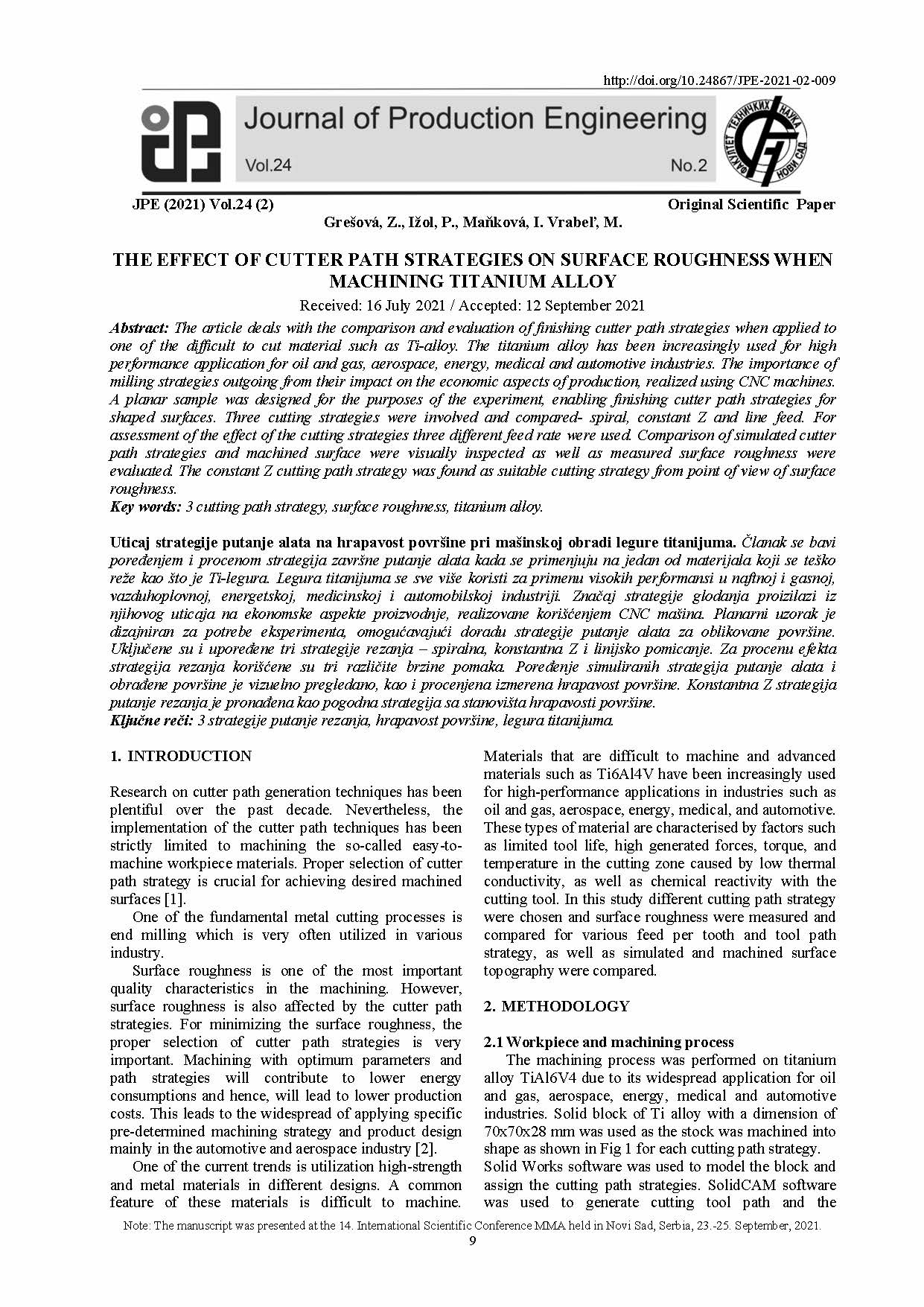The effect of cutter path strategies on surface roughness when machining titanium alloy

Published 2023-10-11
abstract views: 22 // FULL TEXT ARTICLE (PDF): 15
Keywords
- 3 cutting path strategy,
- surface roughness,
- titanium alloy
How to Cite
Copyright (c) 2023 Journal of Production Engineering

This work is licensed under a Creative Commons Attribution 4.0 International License.
Abstract
The article deals with the comparison and evaluation of finishing cutter path strategies when applied to one of the difficult to cut material such as Ti-alloy. The titanium alloy has been increasingly used for high performance application for oil and gas, aerospace, energy, medical and automotive industries. The importance of milling strategies outgoing from their impact on the economic aspects of production, realized using CNC machines. A planar sample was designed for the purposes of the experiment, enabling finishing cutter path strategies for shaped surfaces. Three cutting strategies were involved and compared- spiral, constant Z and line feed. For assessment of the effect of the cutting strategies three different feed rate were used. Comparison of simulated cutter path strategies and machined surface were visually inspected as well as measured surface roughness were evaluated. The constant Z cutting path strategy was found as suitable cutting strategy from point of view of surface roughness.

